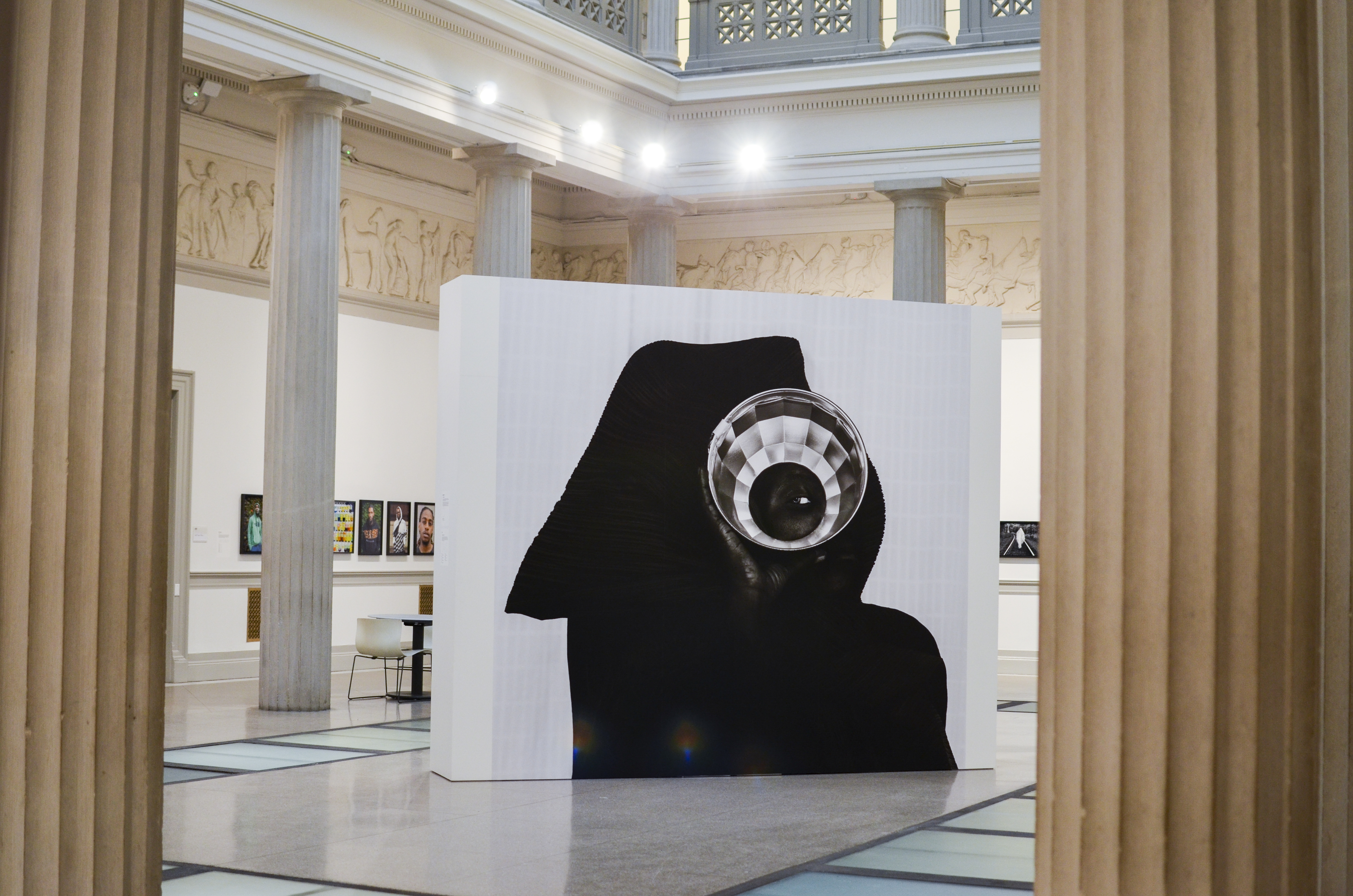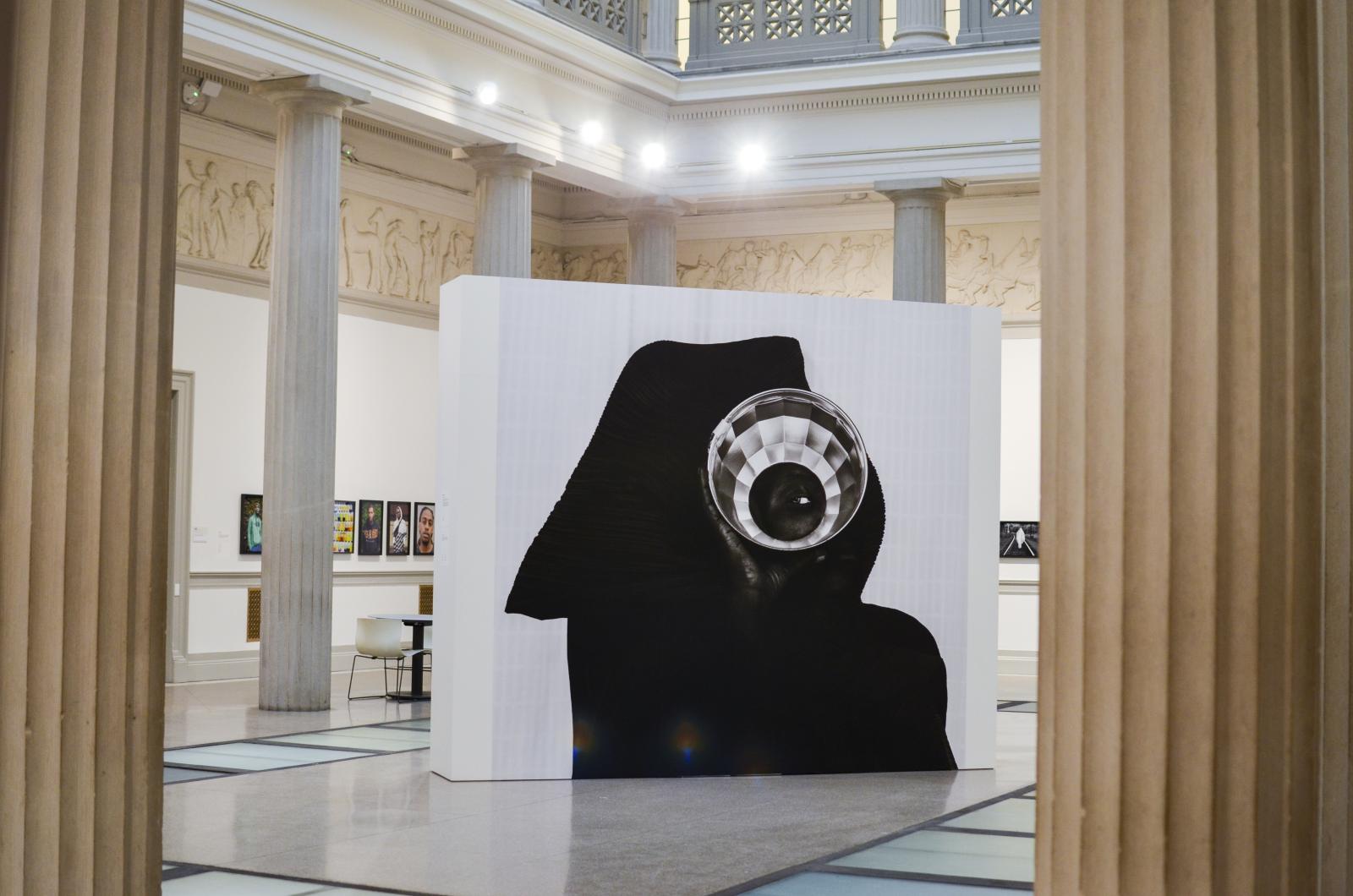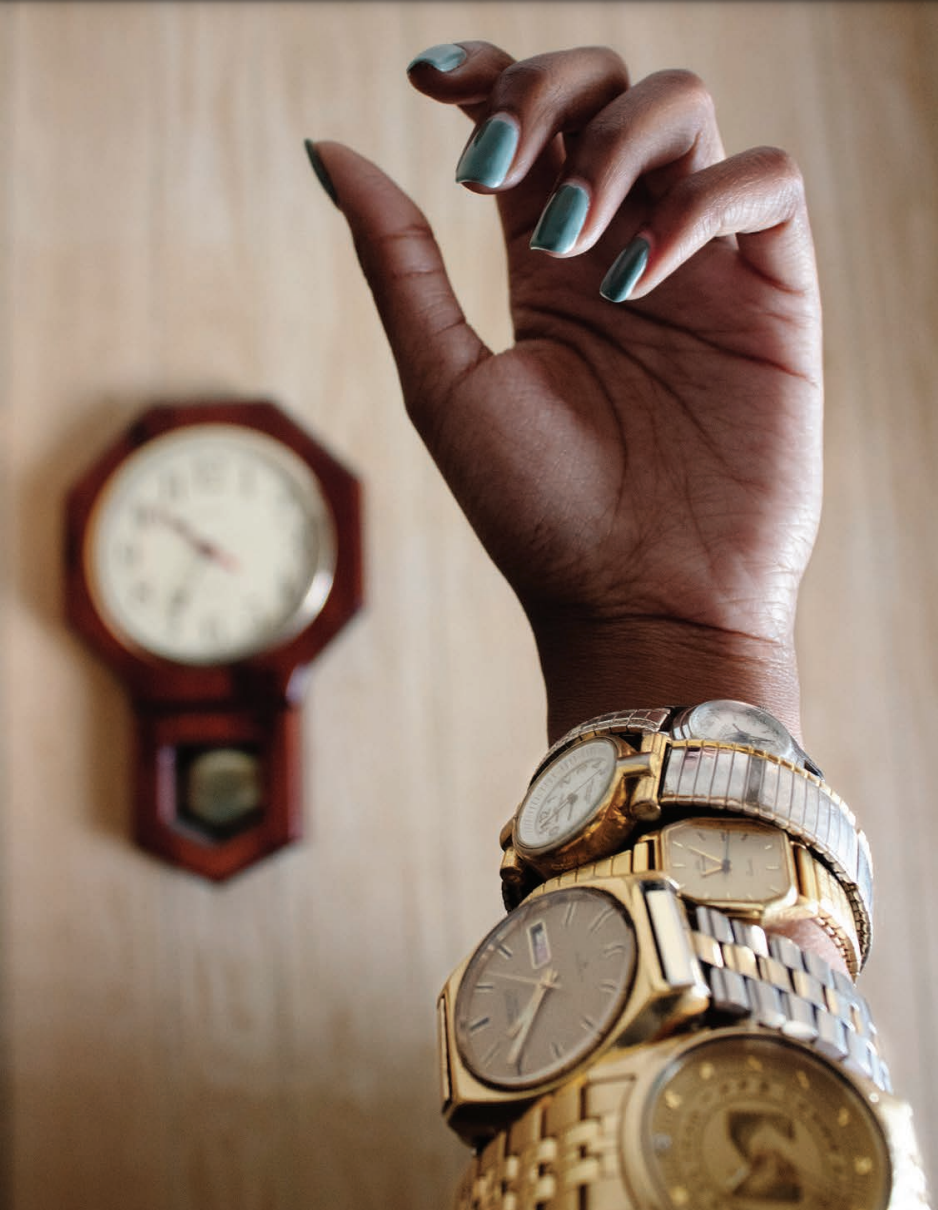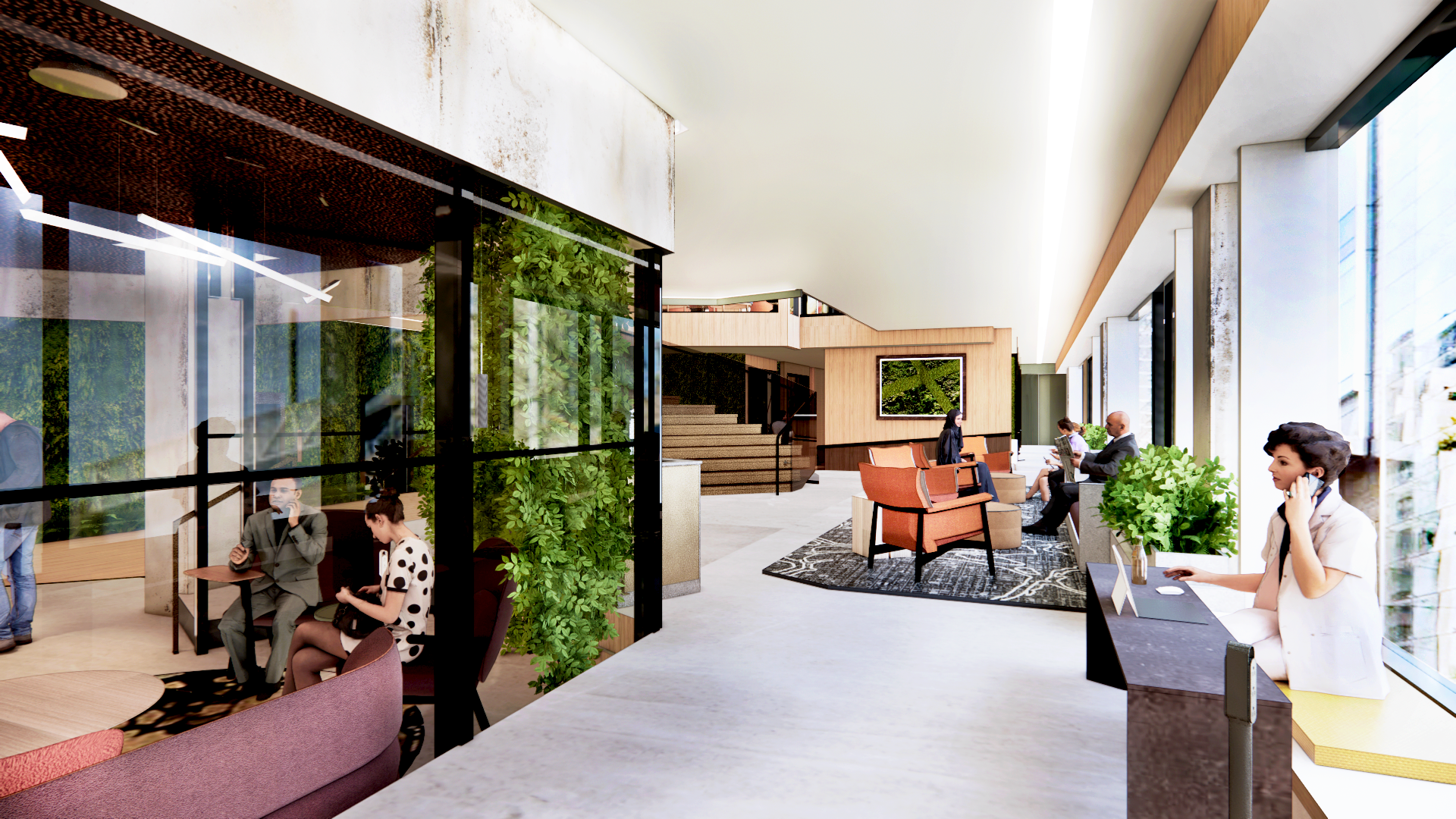In April, graduating students in the Corcoran School of the Arts and Design will exhibit their culminating artistic projects as part of NEXT, the school’s annual thesis and capstone show. In preparing for NEXT, students learn not only how to mount an installation but how to find their voices and hone their work for exhibition—valuable institutional support as students prepare for the next stage of their careers.
That kind of comprehensive support can be critical for new artists, and expanding it from the academy into the community can bring valuable new artistic insights to the table. That’s the thesis of the Women’s Mobile Museum (WMM), a collaborative exhibition on display now through March 11 in the south atrium and hallway of the Corcoran’s landmark Flagg Building.
The WMM is a collaboration between TILT Institute for the Contemporary Image (formerly the Philadelphia Photo Arts Center), South African artist Zanele Muholi and 10 Philadelphia-area artists identifying as women and femmes. Their deeply personal, technically refined work ranges from the documentary (Shasta Bady’s exploration of public transit spaces and riders in Philadelphia) to the surreal (Andrea Walls’ ghostly images evoking the trauma of forced displacement) and the editorial (artist afaq’s lush self-portraiture that “disrupt[s] and disarm[s] the Western gaze”). The exhibition comes from perspectives outside the academy, ultimately centering on the question of who gets permission to be an artist and why.
Lori Waselchuk, exhibitions and programs coordinator at TILT, said WMM began as a residency offer to Muholi alone but grew after the artist proposed an expanded vision.
“Muholi has always prioritized inclusivity and representation, so they gave us a counter request to collaborate with the Philadelphia community,” Waselchuk said. “They envisioned a project that would empower and train women who are interested in the media arts but haven't been able to access it for reasons of economic disenfranchisement, systemic racism and all these other barriers that exclude really important voices from our public artistic conversations.”
The 10 Philadelphia women eventually selected were emerging artists in the truest sense. None had previous access to higher education or professional opportunities in the arts. Just two had worked with a DSLR camera before; several had never been to an art museum. From the beginning, Waselchuk said, the project was designed to interrogate who feels welcome in artistic spaces, and what is gained when those spaces become more open.
Director of Graduate Studies for New Media Photojournalism and Associate Professor of Photojournalism Susan Sterner, who helped bring WMM to the Corcoran, said the “phenomenal” work on display is a major opportunity for students.
“It’s so deep in inquiry and reflection, and it’s just amazing work to stand in front of,” she said. “It’s really important to have work from many kinds of voices and many kinds of media and life experiences actually in the buildings and around the students so that they can see it and be quiet with it.”
For Sterner, the parallel with NEXT is also significant.
“This is a [project] where the timeline from an idea to really powerful and affecting work is about nine months to a year, which is what our students do,” Sterner said. “That’s inspiring to see—that that kind of transformation in the work they’re making and in themselves as artists and photojournalists is totally possible.”
The Women’s Mobile Museum is viewable Monday through Friday from 10 a.m. to 5 p.m. at the Corcoran School of the Arts & Design, 500 17th Street NW. Members of the GW community can use a GWID card at E Street or New York Avenue to enter. This exhibition is by appointment to the public. To see this show and shows at the Brady Art Gallery, please email lutherbradyart gmail [dot] com.
gmail [dot] com.






